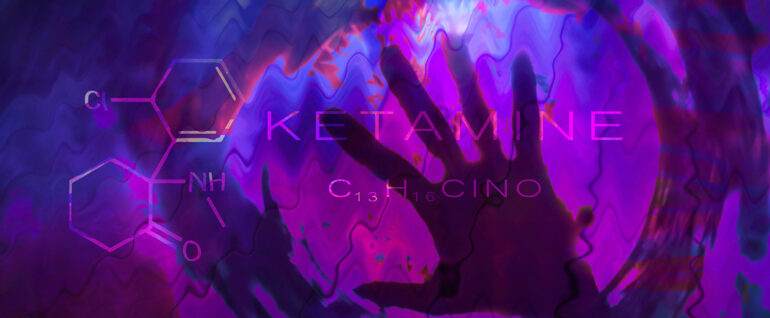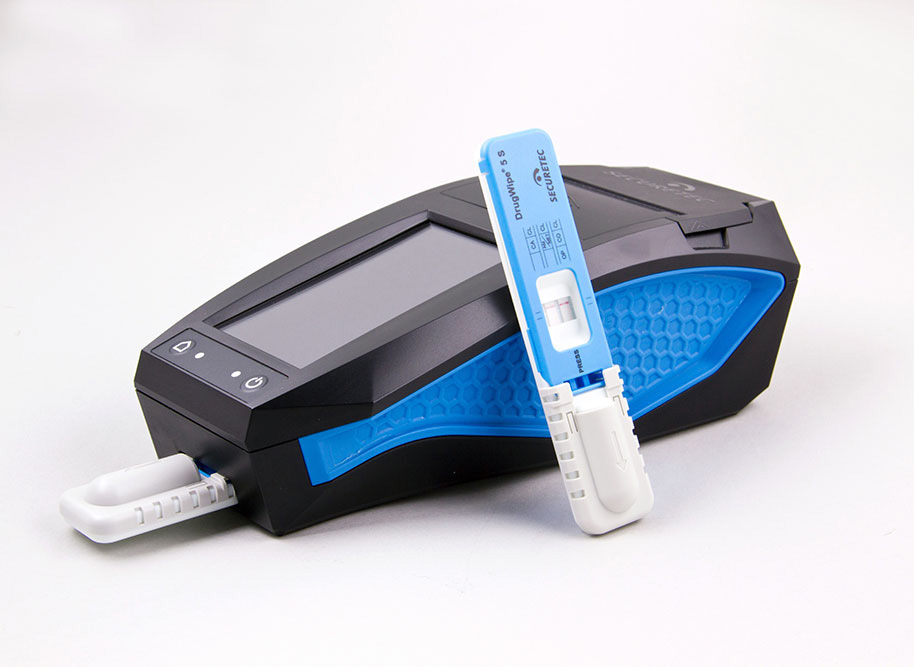
Near-death experiences and accidents included
The famous song “Space Oddity” by David Bowie, commonly believed to be about the experience of taking mind-altering drugs, perfectly describes the feelings of alienation and dissociation that come with using ketamine. Ketamine users have intense hallucinations and even near-death experiences, as well as being at a greatly increased risk of accidents and injuries. Long‑term use leads to dependency and irreversible damage to the body.
The 2021 report published by the European Monitoring Centre for Drugs and Drug Addiction (EMCDDA) registers indications of increased ketamine consumption. Until now, there has been no consistent monitoring of the substance group to which ketamine belongs. However, the warning signs cannot be overlooked. For example, surveys indicate a rise in the consumption of dissociative drugs, of which ketamine is one. In the new psychoactive substances (NPS) group, arylcyclohexylamines (largely ketamine) account for 10% of seizures. At least 16 EU countries reported seizures of ketamine, with quantities ranging from 250 to 600 kilograms. Authorities in the Netherlands in particular reported that ketamine has become a commonly used drug among young consumers. Accident and emergency departments across Europe have reported an increased number of ketamine-related admissions. As a result, the EMCDDA is calling for improved monitoring of and research into this substance.
Like cocaine, ketamine is usually snorted in the form of a white crystalline powder, as this produces the longest-lasting effects. Ketamine highs last about 1 to 2 hours. It can also be injected or smoked. Ketamine in the form of drops or tablets is less popular because the hallucinogenic effects are not as strong. The purity of illegal ketamine is usually unknown, making it easy to accidentally overdose.

Ketamine is usually snorted in powder form, though it is sometimes also injected or smoked in
crystalline form. Consumption in liquid or tablet form is rare.
Ketamine produces hallucinations and distortions of time and space. At high doses, it can even produce out-of-body and “near-death” experiences, with users feeling that they have left their body and become one with the world around them. People can also feel completely detached from reality. This is commonly referred to as “falling into a K‑hole”.
Acute side-effects and risks include a loss of consciousness, rapid heart beat, nausea and temporary immobility, as well as impaired perception. This, coupled with a greatly reduced sensitivity to pain, leads to a clear and demonstrable increase in accidents. In one British study1 of 90 ketamine users, 13% reported that they had been involved in an accident as a direct result of being high on ketamine.
83% of users said they knew someone who had been involved in an accident for the same reason. Long-term risks include dependency, irreversible damage to the urinary tract, permanent cramping pains in the stomach, and damage to the cardiovascular system.
An MRI scan2 provides evidence of the effects of chronic consumption of ketamine on the brain. After just 6 months, slight defects are visible. After one year, deep areas of the brain are also affected. After four to five years, the damage has spread to the limbic system and brain stem.

A DrugWipe 6 S with a positive ketamine test result.
In most countries, ketamine is a prescription medication but is not classified as a controlled substance. One exception to this is Great Britain, where ketamine is a Class B drug. Due to increasing misuse of the substance, it is now also beginning to fall under restrictions in countries where it was previously freely available (such as India).
In Germany, ketamine is only available on prescription. It does not fall within the remit of current German legislation on narcotics (i.e. the Narcotics Act). However, illegal sale can result in a fine or a prison sentence of up to 3 years under the Medicinal Products Act.
The use of ketamine to treat depression may only serve to increase interest in it as a recreational drug. Increasing reports – mostly positive – about this therapeutic use of ketamine often give a false impression of this drug.
The DrugWipe® rapid saliva screening test also detects ketamine –
just ask us, we’re always happy to help.
References:
European Drug Report 2021, published by the European Monitoring Centre for Drugs and Drug addiction, Lisbon
www.drugcom.de, BZgA (Federal Centre for Health Education), Cologne
1 Advisory Council on the Misuse of Drugs (Great Britain): Ketamine: a review of use and harm. (PDF; 971 kB) Report for the Home Secretary and the Secretary of State for Health, London, 10 December 2013
2 Chunmei Wang, Dong Zheng, Jie Xu, Waiping Lam, D. T. Yew: Brain damages in ketamine addicts as revealed by magnetic resonance imaging. In: Frontiers in Neuroanatomy. Vol. 7, 2013, doi:10.3389/fnana.2013.00023



